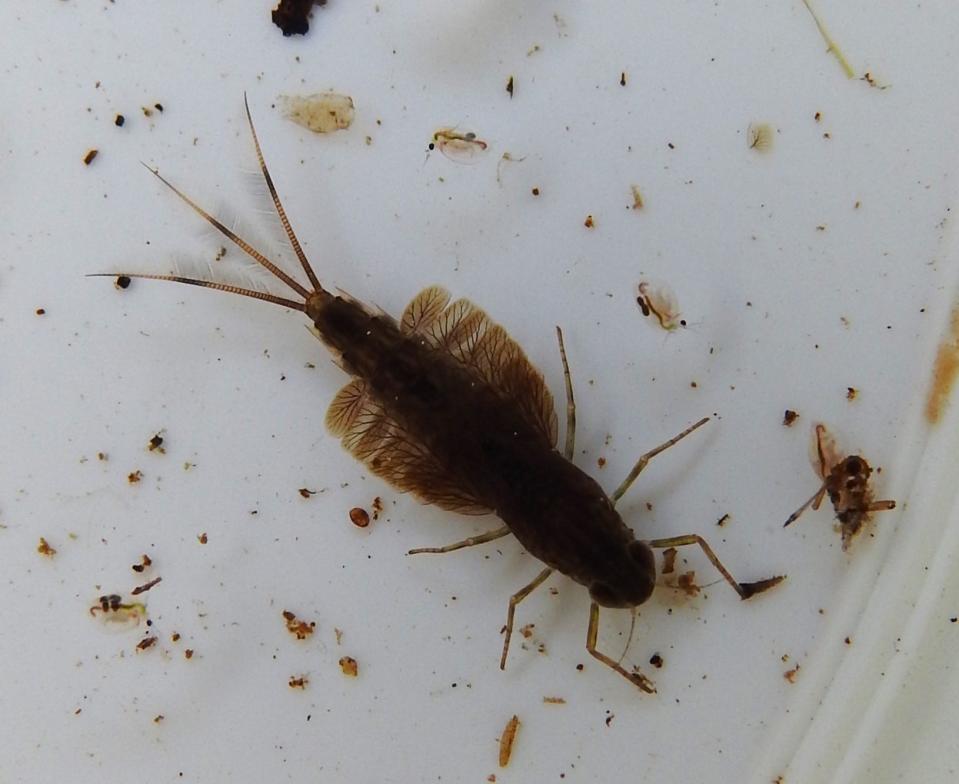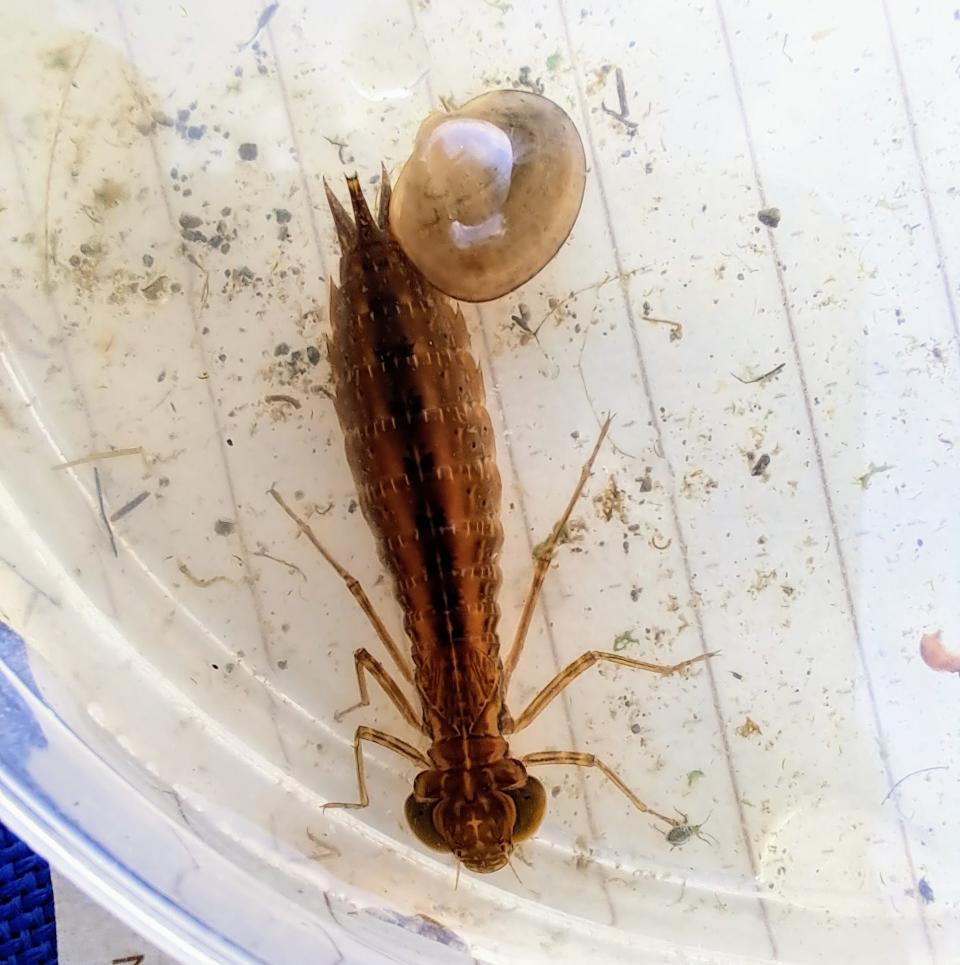As both a naturalist and a science teacher. I can’t help but be in love with citizen science.
What makes citizen science especially attainable for most of us are various apps. I highly recommend iNaturalist to anyone interested in trying to identify the natural world around them.
Since this is our last week of spring and school (for those of us who teach in New Hampshire), I’m thinking about next year and everything I didn’t do this year. One of the biggies for me was not doing a stream macroinvertebrate biodiversity survey with my biology students. We’ve done this every year except this one. These surveys involve visiting the river that runs through my campus and collecting samples of the critters that live amongst the rocks, sticks and sediment, giving us a snapshot of how healthy the river is (based on the types of macroinvertebrates we find).
Imagine my chagrin when a teacher group I’m part of started talking about something called MacroBlitzing and how much fun they were having with the students… doing a stream macroinvertebrate survey and uploading what they found to iNaturalist to share with the scientific community and the world.
I am lucky enough to have a stream running through the back of my property. As a naturalist and a science teacher, I need to be Macroblitzing all summer! This is an activity anyone with access to a stream can do.
You don’t need to own the stream; you just need to get in it and look around. You also don’t really need an app or even information on identification to enjoy getting into a stream, especially with enthusiastic young people, and exploring the variety of aquatic invertebrates (animals without backbones–i.e., not fish) that share our rivers. But, if you like to share your findings and perhaps contribute to science, think about participating in something like MacroBlitz. The project, funded by the National Geographic Society, encourages people to find and photograph aquatic macroinvertebrates and upload these photos to the MacroBlitz project in iNaturalist.

Aquatic macroinvertebrate diversity surveys have long been a tool used by conservation managers in surveying the health of our streams. Macroinvertebrates are small (but not microscopic) water-dwelling critters, some of which are very sensitive to water pollutants, while others are not. If surveys turn up lots of pollution-sensitive macroinvertebrates, that’s a good indicator of stream health.
I took a recent wade into my steam armed with a small aquarium net. I swept it along the bottom of the stream, kicking up some of the rocks, hoping to get samples of the critters that live along the bottom, under rocks, in the sandy muck. I’ve done this before and gotten a variety of insect larvae–dragonfly, caddisfly, stonefly, mayfly and more. All of these “flies” have an aquatic stage to their lives, emerging as flying adults.

This time I found mayflies in abundance- seems a little late, I guess they weren’t checking the calendar. This was exciting! According to Maine.gov “mayflies are very sensitive to pollution, and as such are usually only found at high quality, minimally polluted sites.” Doing these surveys helps us get an idea of how healthy our rivers and streams are. And, according to the MacroBlitz folks, understanding who is out there is “critical as the scientific consensus is that these organisms are under stress due to climate change, habitat loss and other watershed impacts including lawn care practices. All indications are that macroinvertebrate abundance is declining. This decline is a concern for biodiversity and ecosystem health as these critters are an important part of larger food webs.”
If you happen to live near a stream or river, there are numerous things you can do to help protect the water that runs by your house. For example, natural management practices in your yard like not using inorganic fertilizers; limiting all fertilizers, pesticides, or anything that can run off into the water; planting native plants and shrubby buffers along the stream edge to enhance the habitat for wildlife both next to and in the water; and/or thinking about any actions that might harm water quality and avoiding them.
With summer at our doorstep and a potential heat wave on the horizon, consider visiting a local stream or river (perhaps with some kids in tow — they really do make it even more fun) and looking for the macroinvertebrates that live right next door, but out of view.

Susan Pike, a researcher and an environmental sciences and biology teacher at Dover High School, welcomes your ideas for future column topics. Send your photos and observations to spike3116@gmail.com. Read more of her Nature News columns at Seacoastonline.com and pikes-hikes.com, and follow her on Instagram @pikeshikes.
This article originally appeared on Portsmouth Herald: MacroBlitzing is a summer activity that anyone can do: Nature News
Signup bonus from




